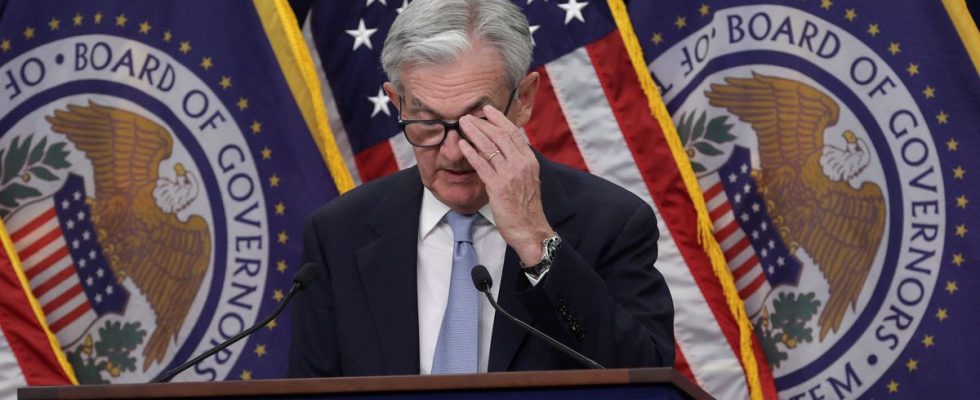Spare the goat and the cabbage. The US central bank (Fed) raised its rate by a quarter of a percentage point on Wednesday and sought to balance its fight against inflation against the turmoil in the banking sector which it warned could “weigh” on the economy. The Fed’s main policy rate is now in a range of 4.75-5.00%, the highest level since 2006, following a unanimous decision.
The powerful institution faced a difficult arbitration. It finally opted for the compromise, between the sharp rise in rates that it anticipated two weeks ago in the face of high inflation, and a break, in order to avoid aggravating the difficulties of the banks. “We considered ‘pausing’ in the days leading up to the meeting,” Fed Chairman Jerome Powell said during his press conference on Wednesday.
But inflation, which is not falling enough and the job market, which is still tight, have finally convinced Fed officials to tighten the screw further. Not as strong though as they previously anticipated.
Savers’ money is “safe” in banks in the United States, assured Jerome Powell, affirming that the American banking system was solid, and stressing that the institution was “resolved to learn the lessons of this episode”.
Inflation expected at 3.6% in 2023
“The events of the past two weeks should lead to some tightening of credit conditions for households and businesses and thus weigh on demand, the labor market and inflation,” explained Jerome Powell. “You can think of it as the equivalent of a rate hike,” he added.
And for the future, the majority of the 18 Fed officials – governors and presidents of regional offices – anticipate an additional increase of a quarter of a point in rates. Only one of them considers it appropriate to stop there, while seven others are in favor, conversely, of going even higher.
The US central bank also updated its economic forecasts on Wednesday, the previous ones dating back to December. It now anticipates inflation for 2023 at 3.6%, against 3.5% previously, and for 2024 at 2.6%, against 2.5%. Gross domestic product (GDP) growth forecasts have been revised down slightly, to 0.4% from 0.5% for 2023, and to 1.2% from 1.6% for 2024.
Fragility of the banking system
The recent bankruptcies of US regional banks Silicon Valley Bank (SVB), Signature Bank and Silvergate have created a wave of concern. Governments, central banks and regulators intervened urgently to try to restore confidence, the best weapon to avoid contagion.
“We must strengthen the supervision and regulation” of banks, conceded Mr. Powell, who recalled that an investigation by regulators is underway and who showed himself in favor of the conduct of an independent investigation. US Treasury Secretary Janet Yellen, for her part, assured a Senate committee that “the US banking system was solid”.
After two rebound sessions at the start of the week, European stock markets moved around equilibrium on Wednesday and ended on a mixed trend. Wall Street, however, suddenly let go of the ballast at the end of the session, after the Fed. The dollar, for its part, lost more than 1% against the euro, with currency traders interpreting the Fed’s communication as a sign of easing.

